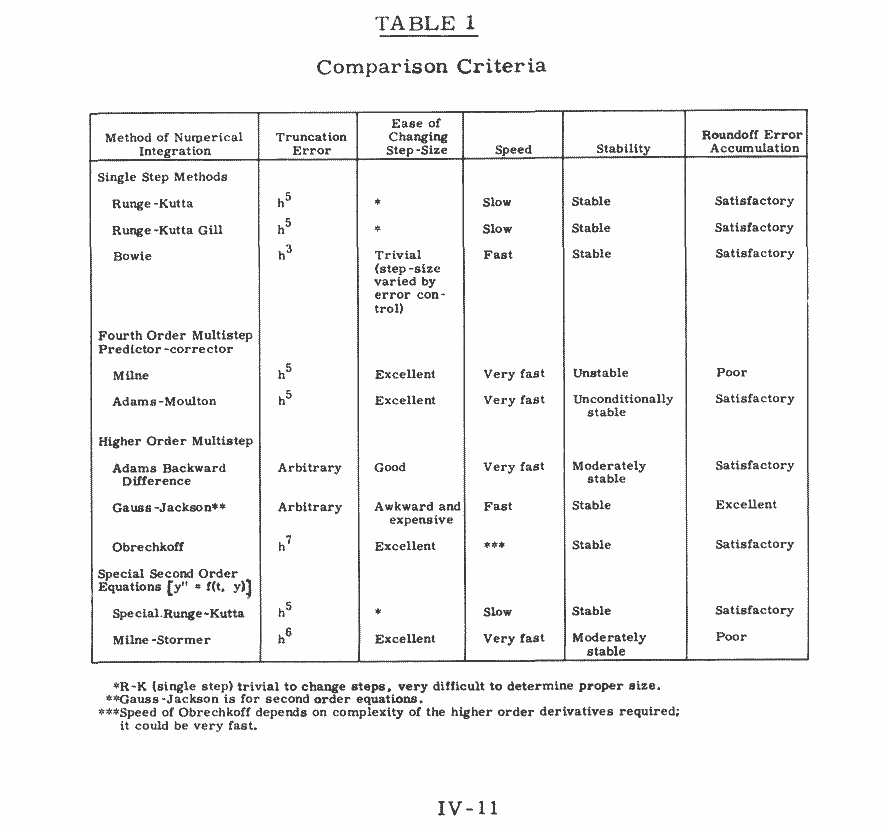NASA’s Orbital Flight Handbook, published in 1963, is a treasure trove of technical information, including a section comparing the strengths and weaknesses of several numerical methods for solving differential equations.
The winner was a predictor-corrector scheme known as Gauss-Jackson, a method I have not heard of outside of orbital mechanics, but one apparently particularly well suited to NASA’s needs.
The Gauss-Jackson second-sum method is strongly recommended for use in either Encke or Cowell [approaches to orbit modeling]. For comparable accuracy, it will allow step-sizes larger by factors of four or more than any of the forth order methods. … As compared with unsummed methods of comparable accuracy, the Gauss-Jackson method has the very important advantage that roundoff error growth is inhibited. … The Gauss-Jackson method is particularly suitable on orbits where infrequent changes in the step-size are necessary.
Here is a table summarizing the characteristics of each of the solvers.

Notice that Gauss-Jackson is the only method whose roundoff error accumulation is described as “excellent.”
A paper from 2004 [1] implies that the Gauss-Jackson method was still in use at NASA at the time of writing.
The Gauss-Jackson multi-step predictor-corrector method is widely used in numerical integration problems for astrodynamics and dynamical astronomy. The U.S. space surveillance centers have used an eighth-order Gauss-Jackson algorithm since the 1960s.
I could imagine a young hotshot explaining to NASA why they should use some other ODE solver, only to be told that the agency had already evaluated the alternatives half a century ago, and that the competitors didn’t have the same long-term accuracy.
More math and space posts
- Golay codes (used on Voyager)
- Reed-Solomon codes (also used on Voyager)
- Hohmann transfer orbit
[1] Matthew M. Berry and Liam M. Healy. Implementation of the Gauss-Jackson Integration for Orbit Propagation. The Journal of the Astronautical Sciences, Vol 52, No 3, July-September 2004, pp. 311–357.

I got a related laugh watching the movie “Hidden Figures.” One of the NASA ladies saves the day by pulling out a reference book and looking up something she vaguely remembers learning about. It turns out to be Euler’s Method!